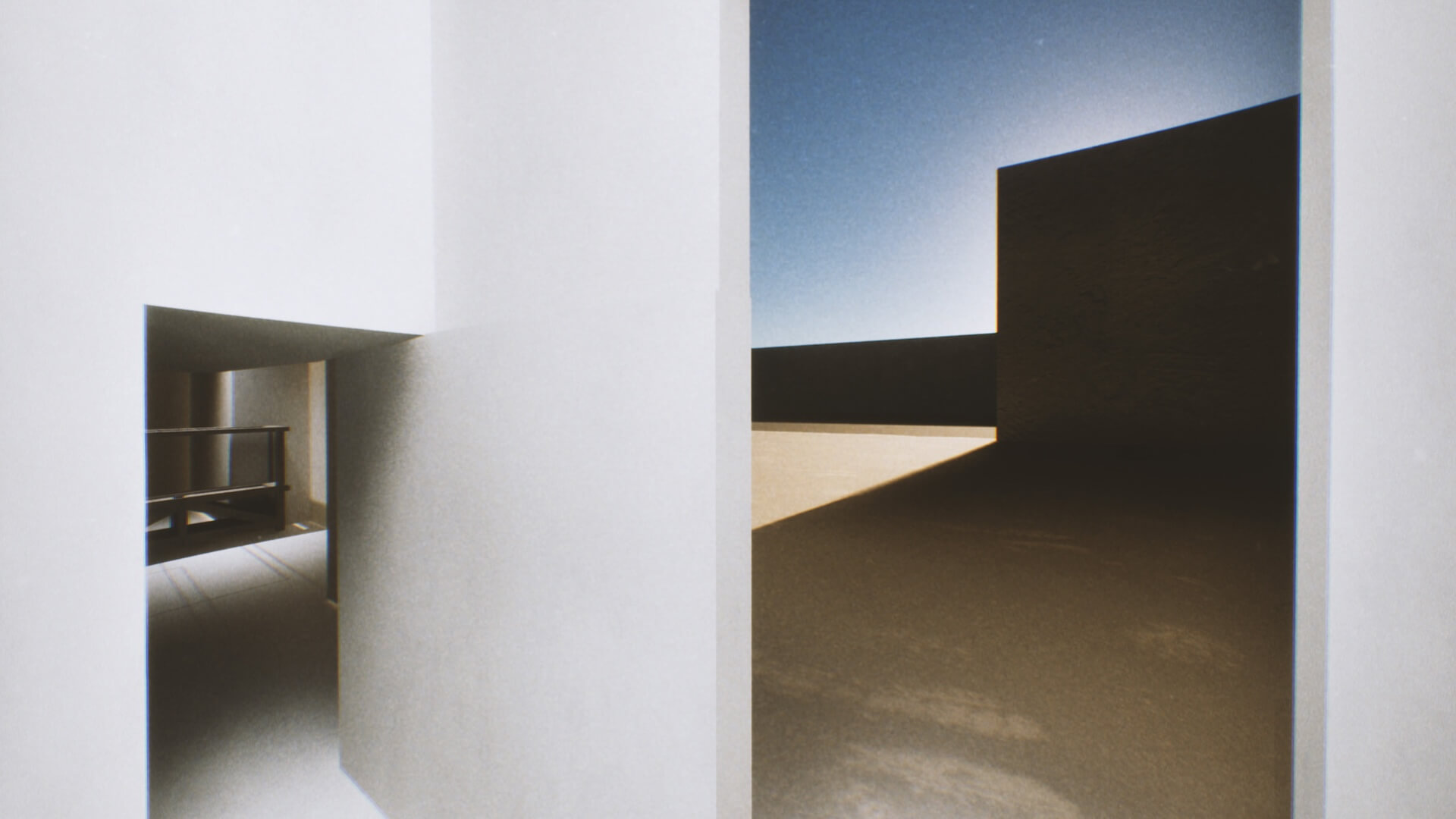Shin-Rung Yang’s Palimpsest, created in collaboration with Paul Wang and Hanyi Zhang, is a standout project among the 2024 grant recipients of the National Culture and Arts Foundation (NCAF). The project brings together a diverse team of specialists in art, architecture, procedural design, artificial intelligence, and psychology. Established in 1996 in Taiwan and funded by the Taiwanese government, NCAF is a non-profit organization committed to fostering artistic and cultural excellence in Taiwan. Over the years, it has supported internationally renowned artists and groups, including the Open - Contemporary Art Center (OCAC), visual artist Li Yi-Fan, and the dance company HUANG YI STUDIO+. In response to the growing interest in interdisciplinary collaborations, the foundation introduced a grant category for multidisciplinary projects in 2022.
Building on Shin-Rung Yang's previous work, Detours & Deviations (2023), as a conceptual prototype, Palimpsestevolves into a comprehensive and immersive world. The project creates an experience where both narrative and landscape are continuously shaped by the participant’s interactions within a virtual environment. The environment features four AI entities capable of interpreting, memorizing, and reinterpreting the interactions between the participant and the environment, using their interpretations to reconstruct the space arbitrarily. The project delves into human spatial perception and memory, exploring inherent discrepancies, misalignments, and ambiguities. It treats the multifaceted process of memory formation and retrieval as a means of extending experiences—particularly those tied to travel and the exploration of cities.
 Shin-Rung Yang, Palimpsest (prototype), 2025–. © Shin-Rung Yang
Shin-Rung Yang, Palimpsest (prototype), 2025–. © Shin-Rung Yang
“The city is a discourse… We speak our city simply by inhabiting it, by traversing it” (Roland Barthes, 1988). Experiencing the city, in itself, is an act of defining it. As people move through space, they "read" its script, forming unique interpretations shaped by their perceptions. Marshall McLuhan famously said that reading is guessing—an active process of making decisions about the meanings of texts. If a city is a book, then its reading must be fluid, constantly adapting to shifting physical and social contexts. We, as readers of the city, are in constant flux as well, and with each passage through the streets, the city is reinterpreted and reshaped. The dynamic world of Palimpsestcaptures this subtle yet persistent process, embodying the act of continuously recapturing and reshaping spaces to reflect the fluidity of both the environment and human experience.
By enabling AI entities to reinterpret and reconstruct the environment, the project positions designers and architects as curators of dynamic experiences rather than creators of static forms, focusing on facilitating encounters without imposing a fixed narrative. As Jacques Derrida stated in Point de Folie - Maintenant l’architecture (1986), "The question of architecture is, in fact, that of place, of taking place in space." This resonates with architect Bernard Tschumi’s belief that architecture is as much about the events occurring within spaces as it is about form and structure. In Palimpsest, the activities become the focal point, with the scenes acting as the main characters on stage, constantly evolving and redefining the space through interaction.
 Shin-Rung Yang, Portraits of Places (detail), 2023. A series of drawings and collages developed during the conceptualization of virtual environments. Graphite, charcoal, acrylic, colored pencil, paper, spray paint, mylar © Shin-Rung Yang
Shin-Rung Yang, Portraits of Places (detail), 2023. A series of drawings and collages developed during the conceptualization of virtual environments. Graphite, charcoal, acrylic, colored pencil, paper, spray paint, mylar © Shin-Rung Yang
Beyond Palimpsest, Shin-Rung Yang actively collaborates with professionals across various fields, profoundly shaping her creative process. In 2022 and 2023, she worked with scenic designers and directors on theater productions, including Sanaz Toossi’s English at the Berkeley Repertory Theatre, directed by Mina Morita, and Lenora Lee Dance’s Within These Walls at Zellerbach Playhouse. Her experience in theater inspired her to integrate set design workflows into Palimpsest’s environmental creation. Since 2017, Shin-Rung Yang has collaborated internationally with visual artists, curators, and architects, including multimedia installations with Czech artist David Brna, Ukrainian artist Arianna Khmelniuk, and Pakistani artist Asma Kazmi, further expanding her interdisciplinary approach.
Palimpsest evokes the spirit of James Joyce’s Ulysses, in that it may initially perplex, yet it invites repeated engagement, uncovering new layers of meaning with each encounter. In this way, the experience of disorientation and the sense of being lost become integral to both the form and the meaning of the journey. As Palimpsest continues to evolve, its contemplative concepts and interdisciplinary methods are poised to spark meaningful discourse across related fields, while its expanding engagement with the public consistently unfolds unique experiences and perspectives.





